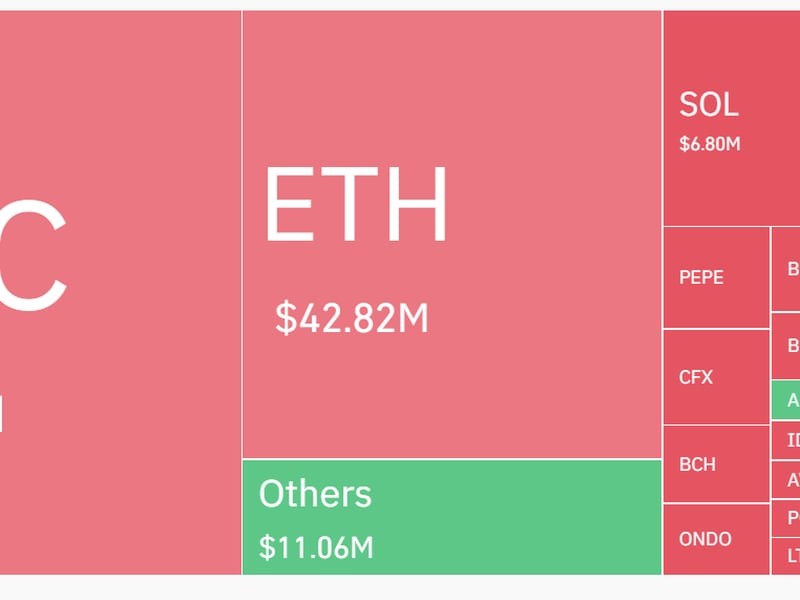Bitcoin, Ether in the Green as Global Easing Cycle Begins

- Asia's business week opened with major cryptos well in the green, and the CD20 up 5%
- This can partially be attributed to a global easing cycle opening up with Swiss National Bank being the first major central bank to cut rates
The crypto market began the Asia trading day in the green, as traders cheered BlackRock's foray into asset tokenisation and the beginning of the global central bank easing cycle.
Bitcoin {{BTC}}, the world's largest digital asset, traded at $67,300, up 4.9% on a 24-hour basis and ether traded 4.7% higher above $3,400. The CoinDesk 20 (CD20), a measure of the most liquid cryptocurrencies, was up around 5% at press time.
Bradley Park, an analyst at CryptoQuant, attributes the gains to the market digesting BlackRock's fund targeting tokenized products on Ethereum called BUIDL.
Shorts that bet against bitcoin and ether are seeing significant losses. Data source CoinGlass shows that over $100 million in leveraged futures positions have been liquidated in the last 24 hours, with around $60 million in short BTC positions and $42.8 million in short ether positions.

Meanwhile, BTC may be up as selling pressure from the Grayscale Bitcoin Trust (GBTC) has slowed. Analysts point to Genesis' sale of shares as a reason for the uptick in GBTC outflow.
Macro factors continue to align bullishly. Last week, the Swiss National Bank (SNB) unexpectedly cut the benchmark interest rate, kicking off a global easing cycle. The Central Bank of Mexico also cut rates, and the Federal Reserve, the European Central Bank, and the Bank of England laid the groundwork for the so-called liquidity easing in the coming months.
"Even though a market correction seems long due, the medium term looks pretty upbeat for equities, residential real estate, gold, bitcoin, etc., if this is the case. From this angle, it is unsurprising that #equities and #gold already made fresh all-time highs," founder and manager of the Blokland Smart Multi-Asset Fund, said on X, explaining the onset of the global easing cycle.
After this week’s central bank action, we now got:
— jeroen blokland (@jsblokland) March 22, 2024
- One major central bank (#snb) started what will soon be a global synchronized monetary easing cycle.
- The biggest and most important central bank (#federalreserve) is holding on to three rate cuts this year despite… pic.twitter.com/ymQaP57o4I








